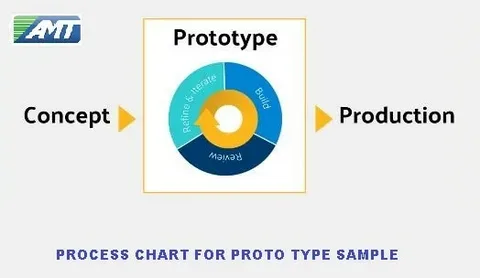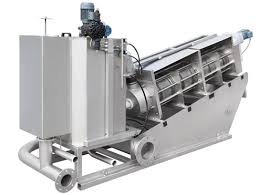In the fast-paced world of product development, rapid prototyping has emerged as a critical process. It allows industrial designers, product engineers, and manufacturing professionals to create prototypes quickly for testing and refinement. One aspect that often demands attention during this process is surface finishing, which can significantly impact the functionality and aesthetics. Common methods for achieving this are vacuum plating and traditional coating.
Understanding Vacuum Plating
What is Vacuum Plating?
Vacuum plating is a modern surface finishing technique that involves depositing a thin material layer onto a substrate in a vacuum chamber. This process ensures a high-quality, uniform finish over complex geometries, making it ideal for intricate designs often found in prototypes.
How Does Vacuum Plating Work?
The process begins by placing the object to be coated in a vacuum chamber. The material to be deposited is then vaporized. As the vapor condenses, a thin and even layer forms on the object’s surface. Various materials can be used, including metals and ceramics, allowing for different finishes depending on project needs.
Materials Used in Vacuum Plating
Common materials employed in vacuum plating include aluminum, chromium, and titanium. Each material provides unique properties to the prototype, such as enhanced durability or specific aesthetic qualities. The choice of material often depends on the intended use of the prototype and the desired appearance.
Advantages of Vacuum Plating in Prototyping
High Precision and Uniformity
Vacuum plating offers unmatched precision and uniformity, crucial for prototypes that require detailed surface finishes. This process ensures every corner and crevice of the prototype receives an even coat, maintaining the integrity of the design.
Fast Application Process
One of the standout benefits of vacuum plating is its speed. The entire process can be completed relatively quickly, allowing rapid prototyping companies to adhere to tight deadlines without compromising the quality of the surface finish.
Versatility in Material Usage
Vacuum plating can use a variety of materials, making it versatile. Whether a prototype requires a metallic finish or a specific color, vacuum plating can accommodate these needs, offering flexibility in design and functionality.
Exploring Traditional Coating Methods
What are Traditional Coatings?
Traditional coating methods encompass a range of techniques used to apply a protective or decorative layer to a surface. These methods have been utilized for decades across various industries.
Common Traditional Coating Methods
- Painting: A versatile method that offers various colors and finishes.
- Electroplating: It involves using an electric current to deposit metal ions onto a substrate, known for its durability.
- Powder Coating: It utilizes electrostatically charged powder baked onto the surface, providing a robust finish.
Advantages of Traditional Coatings in Prototyping
Established Techniques
Traditional coatings are well-established and widely understood in the manufacturing world. Their familiarity allows for consistent results across various materials and applications.
Potential for Thicker Coatings
Some projects may require thicker coatings for added protection or specific aesthetic needs. Traditional methods can achieve these thicker layers effectively.
Cost-Effectiveness
For certain applications, traditional coatings can offer a more cost-effective solution, especially when dealing with large volumes or less complex prototypes.
Comparative Analysis: Vacuum Plating vs. Traditional Coating
Cost
- Initial Investment and Operational Costs
Vacuum plating may require a higher initial investment due to the specialized equipment. However, it can be cost-effective in the long run for projects requiring high precision and consistency.
- Long-term Cost Implications
Traditional coating methods often have lower upfront costs, but the application can be more labor-intensive, leading to higher operational expenses over time.
Speed
- Turnaround Time
Vacuum plating generally offers quicker turnaround times, essential for rapid prototyping. Traditional methods might be slower, especially when additional drying or curing time is required.
- Impact on Project Timelines
Faster processes like vacuum plating can significantly speed up product development, enabling quicker market readiness.
Quality
Vacuum plating provides a high-quality finish that is both durable and aesthetically pleasing. Traditional coatings can vary in quality depending on the method and materials used.
Environmental Impact
- Eco-friendliness
Vacuum plating is generally considered more eco-friendly, producing less waste than traditional methods. The sustainability of both methods can, however, be improved.
- Waste Production and Recycling
Due to overspray and runoff, traditional coatings can produce more waste, whereas vacuum plating produces less waste.
Conclusion
When choosing between vacuum plating and traditional coating for rapid prototyping, several factors come into play, including cost, speed, quality, and environmental impact. Vacuum plating offers high precision, speed, and a cleaner process, making it ideal for projects focusing on these aspects. However, traditional coating methods stand out for their cost-effectiveness and potential for thicker layers.
By weighing the advantages and disadvantages of each method, industrial designers, product engineers, and manufacturing professionals can make informed choices that align with their prototyping goals.
Consider your project’s requirements carefully. If speed and precision are critical, vacuum plating might be your best bet. However, for projects where cost and material variety are priorities, traditional coatings could be more advantageous.



